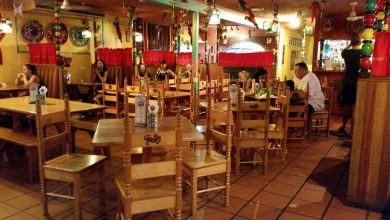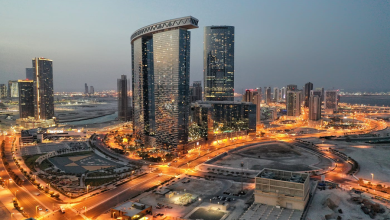Church in Melbourne: A Comprehensive Exploration of Faith, History, and Community

Introduction
Melbourne, the capital of Victoria, Australia, is renowned for its cultural diversity, vibrant arts scene, and rich historical tapestry. Among its many attributes, Melbourne’s churches stand as pillars of faith, community, and architectural splendor. From towering cathedrals to quaint parish churches, these sacred spaces not only provide places of worship but also serve as cultural and social landmarks. This comprehensive article explores the multifaceted world Church in Melbourne highlighting their historical significance, architectural beauty, community roles, and the diverse denominations they represent.
The Genesis of Melbourne’s Churches
The story of Melbourne’s churches begins with the city’s founding in the 1830s. Early European settlers, seeking to establish a sense of community and continuity, constructed the first churches. These initial structures were often simple and humble, reflecting the pioneering spirit of the time and the settlers’ religious devotion. The first church built in Melbourne was St. James’ Old Cathedral, originally located on the corner of Collins and William Streets and completed in 1839.
St. Patrick’s Cathedral: A Gothic Revival Icon
St. Patrick’s Cathedral is a centerpiece of Melbourne’s architectural and spiritual landscape. Designed by William Wardell and completed in 1939, this Gothic Revival masterpiece features soaring spires, intricate stone carvings, and magnificent stained glass windows. It serves as the principal place of worship for Melbourne’s Catholic community and a major tourist attraction. The cathedral is also a significant venue for important liturgical events and cultural performances.
St. Paul’s Cathedral: A Symbol of Anglican Heritage
Located in the heart of Melbourne’s central business district, St. Paul’s Cathedral is an Anglican church that stands as a beacon of spiritual life. Consecrated in 1891 and designed by William Butterfield in the neo-Gothic style, its prominent spires and detailed stonework make it a significant architectural and religious landmark. The cathedral is also known for its vibrant music program, featuring a renowned choir and regular organ recitals.
Churches as Social Service Providers
Melbourne’s churches have long been more than just places of worship. They have historically provided essential social services, including food banks, shelters, and various support programs. These initiatives reflect the churches’ commitment to social justice and community service, playing a crucial role in addressing social issues and fostering community cohesion. St. Peter’s Eastern Hill, for instance, operates a community outreach program that offers meals and support to those in need.
Multicultural Congregations: A Tapestry of Faiths
The multicultural nature of Melbourne is vividly reflected in its churches. Congregations include Greek Orthodox, Serbian Orthodox, Italian Catholic, and many other ethnic communities. These churches not only cater to the spiritual needs of their members but also act as cultural hubs, preserving and celebrating diverse traditions, languages, and customs. The Greek Orthodox Parish of The Annunciation, established in 1897, is a prime example of this cultural richness.
The Emergence of Contemporary Churches
Melbourne is home to a growing number of contemporary churches that embrace modern worship styles. These churches often feature minimalist designs, utilize technology to enhance worship experiences, and create inclusive environments that attract a diverse array of congregants. They represent a shift towards more personal and informal worship practices. City on a Hill, a church that meets in the historic Hoyts Melbourne Central cinema, exemplifies this trend with its contemporary approach to worship.
The Impact of Immigration on Melbourne’s Church Landscape
Immigration has significantly shaped Melbourne’s church landscape. New waves of immigrants have established churches that cater to their specific cultural and spiritual needs, enriching the city’s religious diversity and adding vibrant new threads to Melbourne’s tapestry of faith communities. Vietnamese Catholic communities, for example, have established vibrant parishes such as St. Joseph’s Parish in Springvale, reflecting their strong faith and cultural heritage.
St. Mary Star of the Sea: A Heritage Gem
St. Mary Star of the Sea, located in West Melbourne, is a stunning example of Gothic Revival architecture. Completed in the late 19th century, the church features a magnificent interior adorned with beautiful stained glass windows, detailed woodwork, and a grand organ, making it a beacon of faith and a significant heritage landmark. The church also serves as a venue for classical music concerts, adding to its cultural significance.
The Rise of Non-Denominational Churches
Non-denominational churches have gained popularity in Melbourne, appealing to those seeking a more personal and informal approach to worship. These churches often emphasize contemporary music, practical teachings, and a strong sense of community, attracting a diverse group of worshippers from various backgrounds. Planetshakers Church, known for its vibrant worship music and youth-oriented services, has become one of the largest non-denominational churches in the city.
Architectural Marvels: Exploring Melbourne’s Church Designs
The architectural landscape of Melbourne’s churches is remarkably diverse, encompassing styles from Gothic and Romanesque to modern minimalist designs. Each church tells a unique story through its architecture, reflecting the era of its construction and the community it serves. This architectural diversity adds to the city’s rich cultural heritage. The Sacred Heart Church in Carlton, with its striking Byzantine-style dome, is a notable example.
Progressive Christianity: St. Michael’s Uniting Church
St. Michael’s Uniting Church, located in the heart of Melbourne, is known for its progressive approach to Christianity. The church is committed to social justice, inclusivity, and community outreach. Its beautiful architecture, coupled with its open and welcoming ethos, makes it a beloved institution within the city. The church regularly hosts public forums and events that address contemporary social issues, fostering dialogue and understanding.
Churches as Cultural and Artistic Venues
Many of Melbourne’s churches double as cultural and artistic venues. They host concerts, art exhibitions, and community events, blending their spiritual mission with cultural engagement. This dual role enhances Melbourne’s vibrant arts scene and brings diverse communities together. The Scots’ Church, for example, is renowned for its acoustics and regularly hosts classical music performances.
Educational Contributions: Churches and Schools
Churches have played a crucial role in education throughout Melbourne’s history. Many of the city’s oldest and most prestigious schools were founded by churches, providing education to early settlers and continuing to uphold high standards of academic and moral education. Schools such as Scotch College and Melbourne Grammar School, both established by Presbyterian and Anglican churches respectively, are examples of this enduring legacy.
Hidden Gems: Discovering Lesser-Known Melbourne Churches
Beyond the well-known cathedrals, Melbourne is home to numerous lesser-known but equally fascinating churches. St. Augustine’s Church on Bourke Street, for example, is a hidden gem with its serene atmosphere and beautiful architecture, offering a peaceful retreat amidst the city’s hustle and bustle. Another example is the bluestone St. Mary’s Catholic Church in St Kilda East, which has served its community for over a century.
Embracing the Digital Age: Technology in Melbourne Churches
The advent of digital technology has significantly impacted Melbourne’s churches. Many now offer online services, virtual prayer groups, and extensive social media outreach, expanding their reach and fostering a sense of community beyond physical boundaries. This digital shift has been particularly crucial during the COVID-19 pandemic, allowing congregations to stay connected and engaged despite physical distancing measures. St. Benedict’s Parish in Burwood, for instance, streams its masses live and offers online catechism classes.
The Future of Melbourne’s Churches: Adapting to Change
Looking ahead, Melbourne’s churches are poised to continue evolving, balancing tradition with modernity. They are likely to place greater emphasis on inclusivity, community engagement, and adaptability, ensuring their relevance and vital role in Melbourne’s social and spiritual landscape. This future-oriented approach will help them navigate the challenges and opportunities of a rapidly changing world.
Conclusion
Melbourne’s churches are more than places of worship; they are living testaments to the city’s rich history, cultural diversity, and evolving spiritual life. From grand cathedrals to contemporary worship spaces, these churches serve as vital community centers, cultural hubs, and architectural landmarks. As Melbourne continues to grow and change, its churches will remain integral to its identity, offering solace, community, and spiritual nourishment to all who seek it. Through their doors, one can trace the story of Melbourne itself—a story of faith, resilience, and an ever-evolving journey toward inclusivity and understanding.









